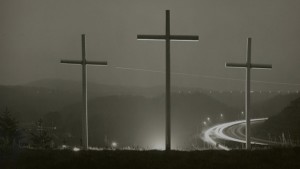
One of the more curious implications of the Roman Catholic sacrifice of the Mass is that Jesus actually did not offer Himself as a sacrifice on the cross. Instead, they say, He offered Himself as a sacrifice at the Last Supper. For example, Roman Catholic apologist Art Sippo at the Catholic Legate, explains:
“The Last Supper was the real sacrificial offering of Christ for sin and it certainly was unbloody. Without the Last Supper I defy you to find any reference to the Body and Blood of Christ being offered as a sacrifice for sin in the entire of the Passion Narratives. Christ did not offer his body and blood to God during the passion.” (Catholic Legate, Q&A on the Sacraments)
As we showed in week 8 of our series, Their Praise was their Sacrifice, this concept of the Last Supper as a sacrifice came late in time, and actually originated in the latter part of the 4th century when Gregory of Nyssa was trying to calculate the three days between Jesus’ death and his resurrection. In his 382 A.D. oration, On the Space of Three Days between the Death and the Resurrection of Jesus Christ, Gregory of Nyssa got creative in his analysis of Matthew 12:40, which says that “the Son of man” must “be three days and three nights in the heart of the earth.” By Gregory’s reckoning, he could only account for two.
Continue reading Melito’s Sacrifice
 Follow
Follow

